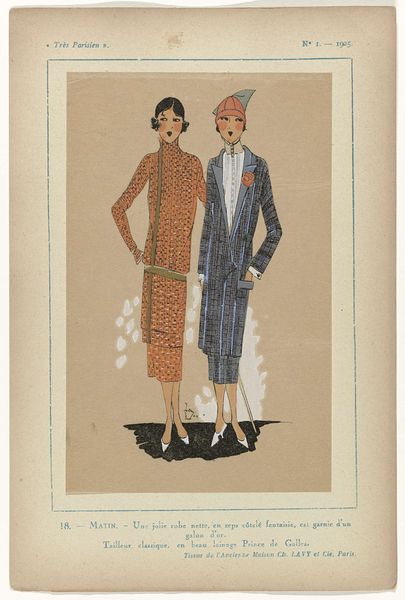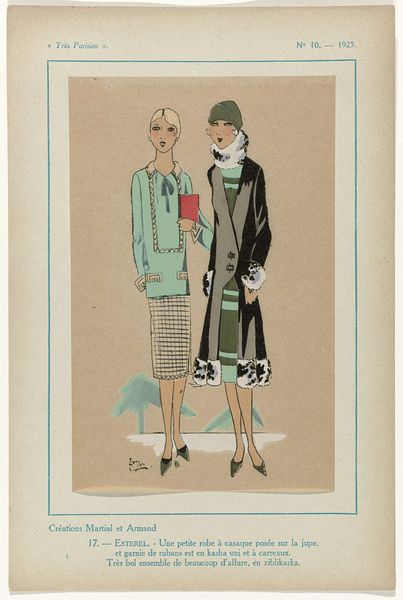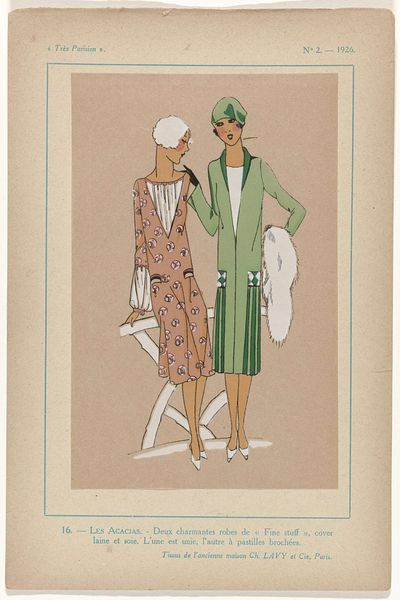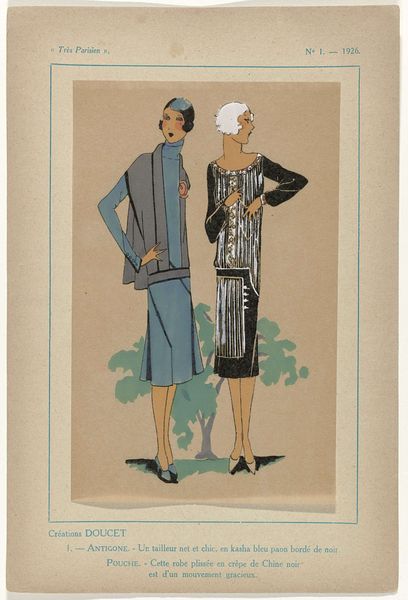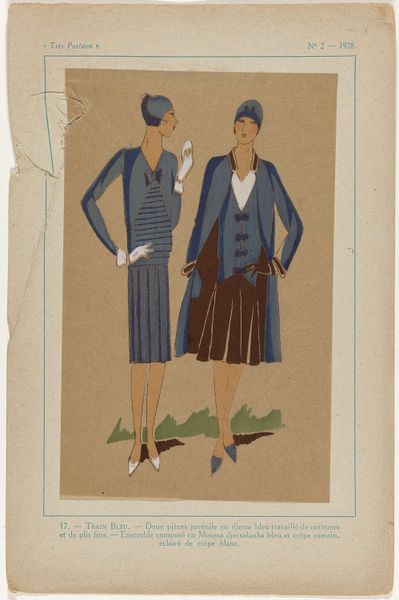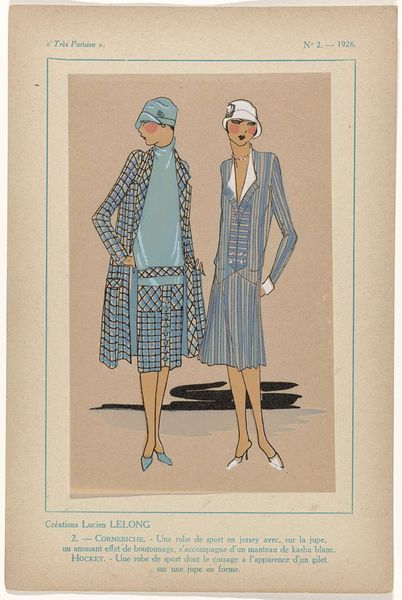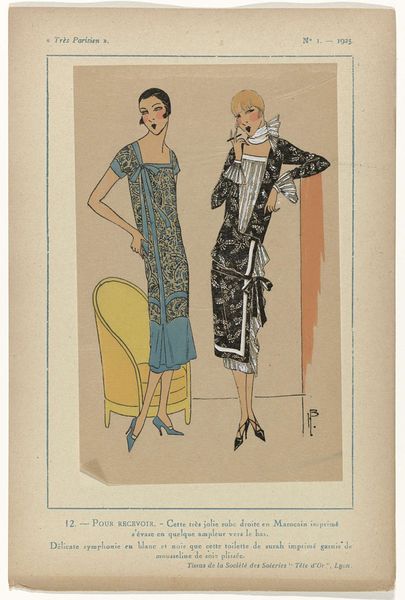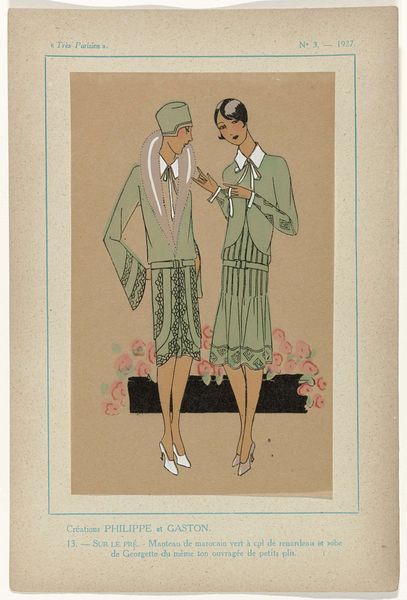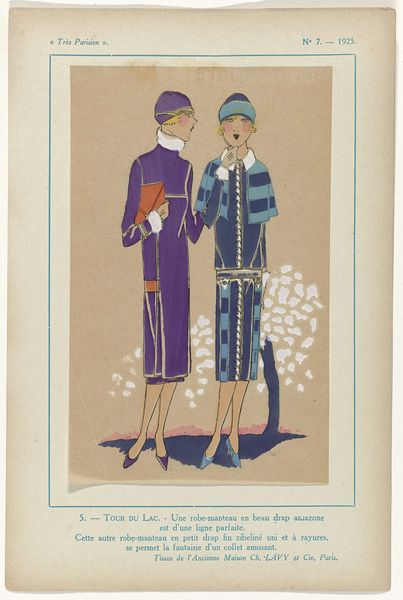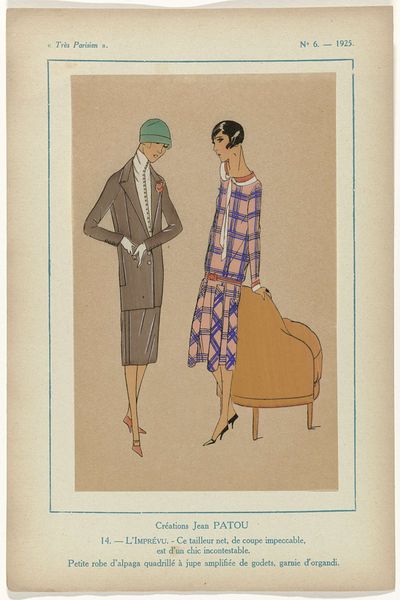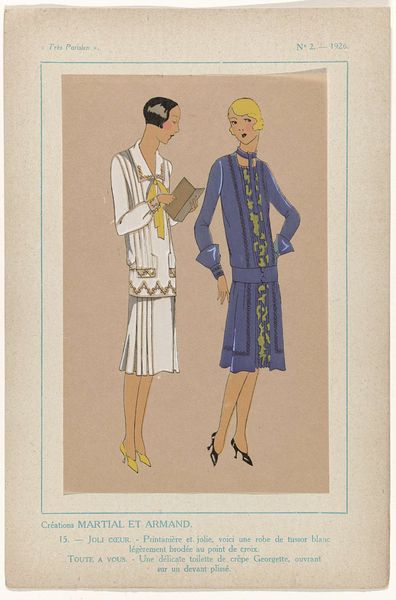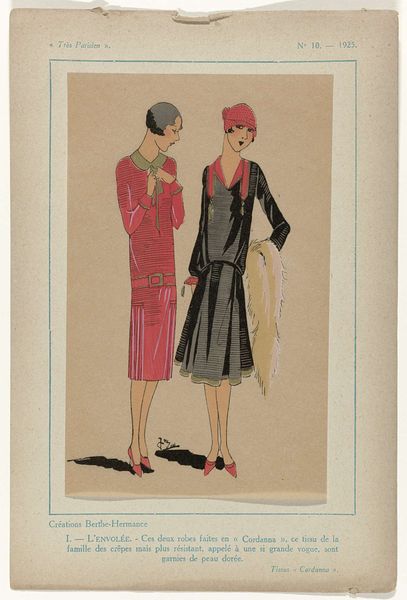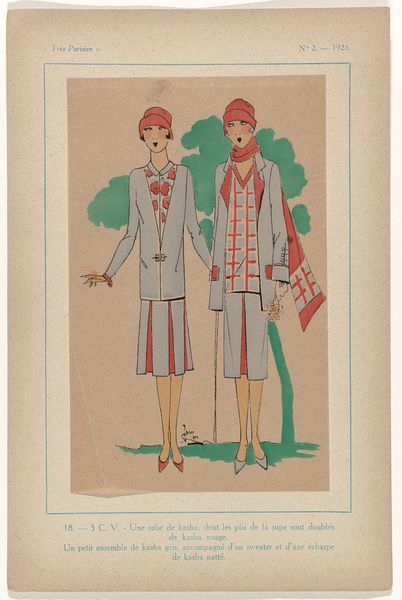
Dimensions: height 195 mm, width 120 mm, mm
Copyright: Rijks Museum: Open Domain
Curator: The languid quality of this watercolor really captures something. I immediately think of flapper culture. Editor: This piece, titled "Tr\u00e8s Parisien, 1925, No 7, Pl. 17 - LES ACACIAS," originates from 1925. The artist listed as G-P. Joumard. What we're looking at is currently held at the Rijksmuseum. I'm especially drawn to its materiality, how the watercolor almost disappears into the page. Curator: Disappears and reappears! The application creates a layered effect. The geometric clothing practically contrasts the human figure. How do we consider the idealization of women represented here? Were these depictions realistic or aspirational for the time? Editor: It’s striking how flat the picture plane is. Look closely—it almost resembles textile design itself. Consider the zibeline wool referenced in the caption. These textures are being sold; the art becomes commerce and shapes expectations about class and taste. Curator: The choice of subject positions fashion as more than just surface. It reflects profound social and political shifts related to female agency. These women aren't just models. They embody a spirit of liberation during a pivotal historical moment after the first world war. Editor: True, but note how the artistic labor—the choices in paint application—serves a function linked to early consumerism. The fashion house gets recognition, style and design converge. Consider that in the context of growing industrialization. Curator: Certainly, yet doesn't its elegant restraint offer a counternarrative against vulgarity and waste? It is still advocating an individual femininity, rejecting earlier repressive social mores for women. Editor: Seeing this image contextualized against those material concerns around manufacturing, consumption and even marketing gives me greater perspective on its own story. It really becomes an historical document, not only for clothes but production itself. Curator: For me, it highlights tensions of freedom. We can analyze and challenge prevailing power structures, the complexities inherent in the very act of representation.
Comments
No comments
Be the first to comment and join the conversation on the ultimate creative platform.
